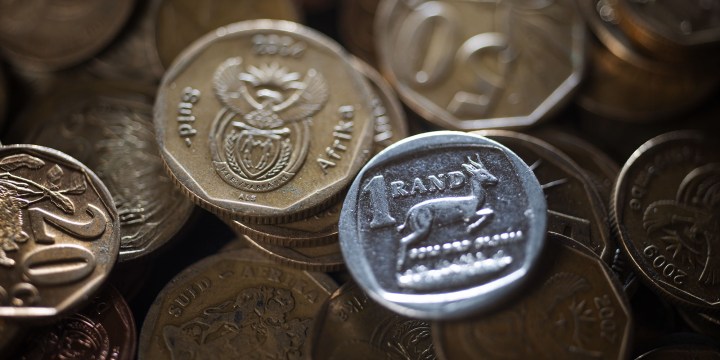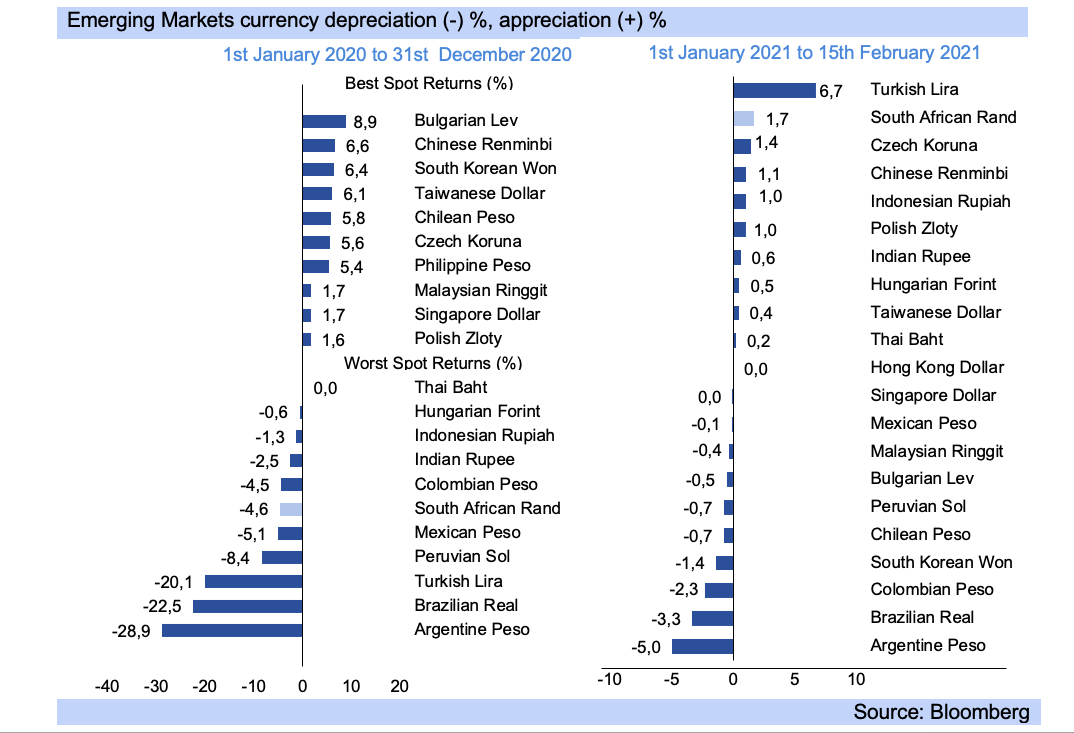BUSINESS MAVERICK ANALYSIS
Rand celebrates its 60th anniversary by surprising on the upside – but for how long?

There are some who consider 60 the new 50, and others, like the World Health Organisation, who see that milestone as signalling the onset of old age. The rand, however, is certainly shrugging off South Africa’s many worrying economic fundamentals and outpacing most of its emerging market counterparts. How long it maintains its youthful vigour is anyone’s guess, it seems.
It’s easy to have a love-hate relationship with the rand after six decades of ups and down – an apt reflection of South Africa’s chequered political history. Anyone who has travelled overseas knows that you cannot be sure what you are paying, from one day to the next, in rands.
Born out of Afrikaner nationalist ambitions in 1961, as Bloomberg reminds us, the currency tends to soar when the going gets good for emerging markets – and comes crashing down when sentiment towards the country turns or broader emerging market crises take hold.
Most notable sell-offs have been during the rand currency crisis in 1996, which was an SA-specific event and so perplexing that they set up a commission of inquiry into why the rand had taken such an inexplicable beating. Then there was the Asian crisis in 1998, and the Argentina-led emerging market sell-off in 2001.
This year, currency traders and economists are watching the rand’s sharp ascendancy with bated breath, with the currency strengthening from a weak point of R15.3 in mid-January to R14.58 to the dollar this week.
The prevailing view is that precarious domestic economic fundamentals do not justify the rand’s 3.6% rally from February 1 to February 16 – a move that has allowed it to head up the emerging market currency leaderboard this month.
But what a difference a few days make – if you measure the currency’s performance from January 29 to February 16, the rand’s 4.2% rally trails the Turkish lira’s 5% gains.
For the year to date, the rand’s appreciation is also less momentous, clocking in at 1.7% and way behind the Turkish Lira’s 6.7% appreciation.

As we head towards the South African Budget next week, the rand’s rally, which coincides with its 60th birthday, is worth delving into because that may give us some indication of how long it could last and what the risks are of the Budget derailing it.
Old Mutual multimanagers investment strategist, Izak Odendaal, says the rand’s strength “is clearly all about global risk appetite” and “not because investors are buying into an SA reform narrative”. But he notes it is interesting that it has outperformed many of its EM peers.
“I suspect it’s partly because it is such a heavily traded currency (and therefore such a geared play on global growth), and partly because of the better-than-expected domestic recovery propelled by the trade surplus.”
For Sanlam investments economist, Arthur Kamp, the rand’s appreciation is largely a result of a favourable high yield differential and global “risk-on” sentiment, along with other emerging markets.
He agrees with Odendaal that a domestic fundamental underpin to the rand’s rally is the strong improvement in South Africa’s trade balance in the latter half of 2020 as a result of high commodity export prices. With commodity prices still gaining ground, that could be cause for optimism that the currency will remain on an even keel at least.
Another South African-specific influence on the currency is the strong upside surprise in government revenue collection in December 2020 (partly reflecting the commodities bounce), says Kamp.
This has raised expectations that the decline in revenue in the current fiscal year 2020/21 may be “significantly less than initially feared”. As a result, there is a possibility that the budget deficit for the new fiscal year 2021/22 may be smaller than projected in the 2020 Medium Term Budget Policy Statement, says Kamp.
Kamp argues that the rand’s appreciation from its sharply undervalued level in April 2020, following its sell-off during the first round of the Covid-19 pandemic, could be viewed as fair in the context of a supportive global economic environment.
Investec economist Annabel Bishop is less sanguine on South Africa-specific factors contributing to the currency’s recent run. She attributes it to strong global financial market confidence of a quick rebound from the pandemic and argues it is not a reflection of SA’s fundamentals. She draws attention to the US dollar’s weakness as a contributory factor to the rand’s rally.
Says Bishop: “The US dollar has weakened as safe haven flows diminish, while emerging market investor appetite is particularly strong. The rand has seen a marked bout of strength over the past week as global financial markets’ risk aversion levels have been eroded, and the rand remains highly sensitive to market movements given the high risk status of its portfolio assets.”
Where to from here is a question that is no doubt weighing on the minds of anyone who watches the rand.
Odendaal’s view is that as long as global conditions remain favourable, there is no reason why the rand can’t appreciate more, but he does think the domestic currency’s relative strength versus other emerging markets means it has probably got a bit ahead of itself.
“But then again, currencies pretty much exist to make fools of forecasters,” he quips.
 Kamp doesn’t have a strong conviction either way.
Kamp doesn’t have a strong conviction either way.
“Whereas buoyant commodity prices and the yield differential may continue to be supportive, domestic fiscal risk remains material. Despite the potential for a smaller-than-expected Budget deficit in the current fiscal year, as well as in the new fiscal year, South Africa is still a long way from a sustainable fiscal position,” he warns.
Considering this, he says, the rand may become vulnerable again as the year wears on, especially if US fiscal expansion is accompanied by expectations of a shift towards tapering of the US Federal Reserve’s balance sheet.
Bishop says the rand could strengthen on the outcome of the ANC’s NEC meeting this weekend. If reports that corrupt ANC members are required to step aside prove true, a key stumbling block to substantially strengthening SA’s economic growth and employment will be removed.
Her “extreme up case” forecast for the currency sees it firming to R13.25 by the end of this year. However, this is based on the following scenario: a rapid resolution of Covid-19, economic growth of 5% to 7% in South Africa, a favourable governance environment, growth creating reforms, strong FDI inflows and strong fiscal consolidation.
So extreme is this ultimate nirvana for South Africa that it is ascribed a 1% probability of happening.
Bishop’s more likely base case puts the rand at R15.20 to the dollar by the end of the year. The backdrop to this scenario is sufficient domestic and global policy support prevails, risk sentiment stabilises, then improves, South Africa exits recession in the third quarter of this year and fiscal consolidation occurs.
Most indicative of the uncertainty that surrounds the likely future trajectory of the rand is that Bishop spells out five possible scenarios for the currency.
If there’s one thing we know for sure, it’s that the rand, which, according to the World Health Organisation has entered its old age, is unlikely to give up its habit of surprising us. DM


















 Become an Insider
Become an Insider
60 years ago: R 1 = $ 1.40 .
What happened??